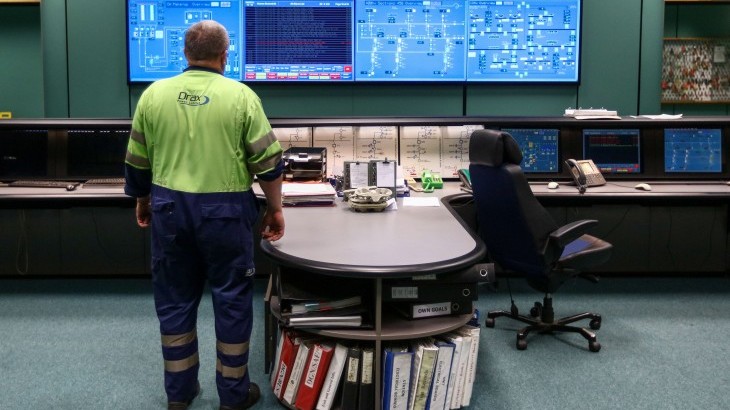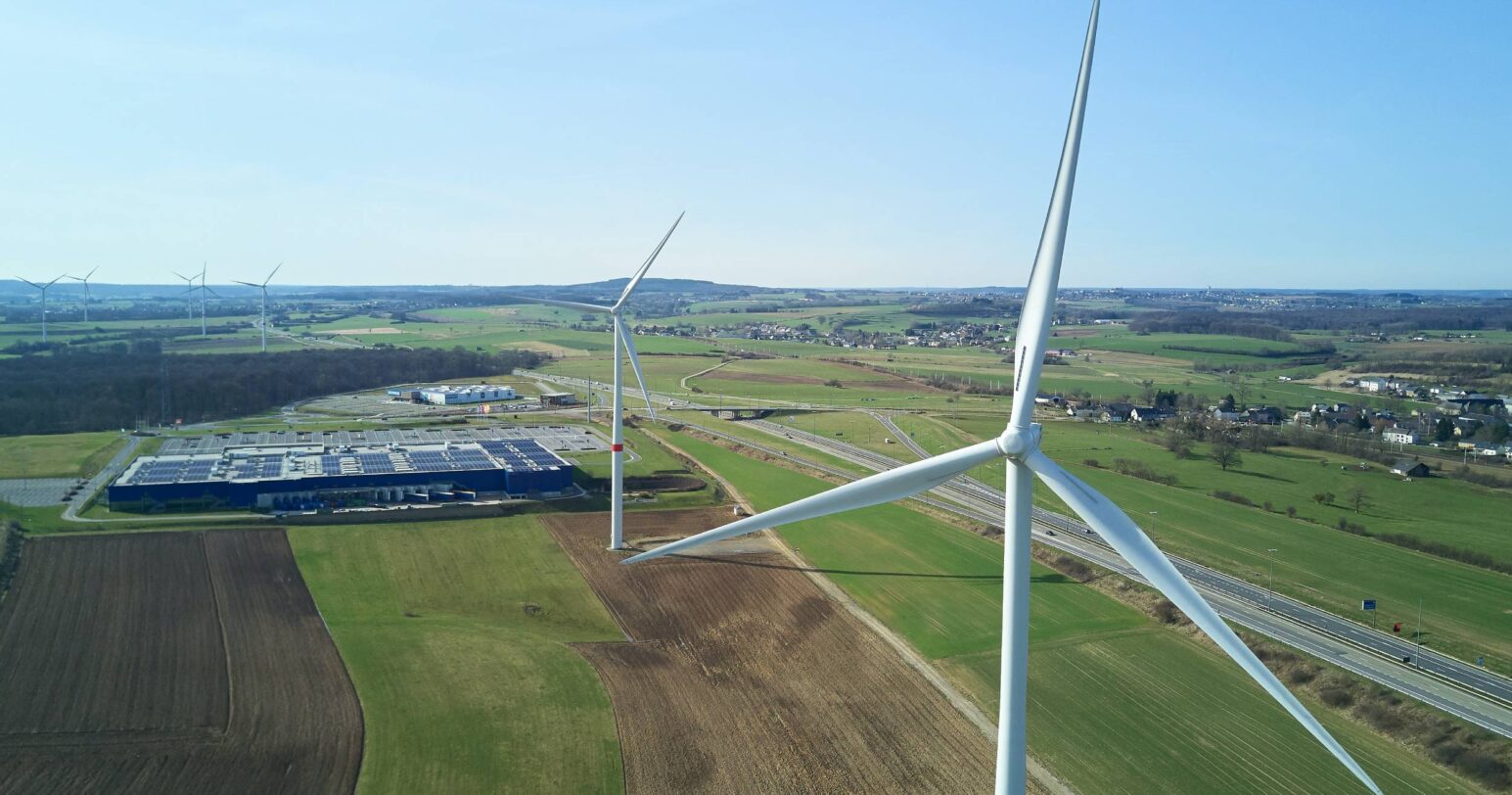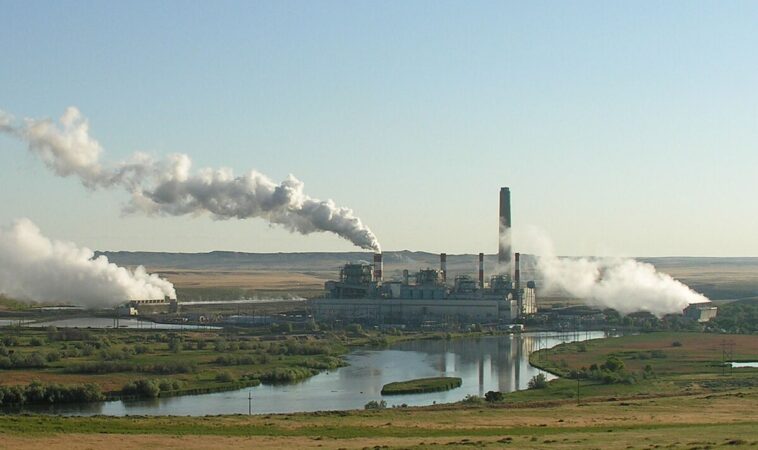

By Bryony Collins at Bloomberg NEF
The UK is rapidly retiring the coal-fired relics of its industrial past and moving toward a future where days with zero coal-fired generation are the norm. Coal plants accounted for less than 1 percent of UK electricity in June 2018, as a spell of cloudless days led to lots of solar power generated, and a subsequent decrease in demand for thermal power.
Set among the rolling hills of Yorkshire, the Drax power plant is an example of how power stations can be retooled to run on alternative fuel. Over the last decade or so, the 4-gigawatt plant has gradually been converted to run on biomass instead of coal. As of August 2018, four of the six units at the Drax plant in Yorkshire are powered by wood pellets – making the power station the “largest single source of renewable power in the UK”, Will Gardiner, chief executive at Drax, told BNEF in an interview. Overall, the Drax plant generates about 6% of UK electricity and enough renewable electricity for four million households.
Watch the interview of Will Gardiner, CEO, Drax
The plan is for the final two units to be converted to run on natural gas in the next 12 to 18 months, dependent on planning permission and the success of Drax winning a contract to provide extra capacity to National Grid, said Gardiner.
The company wants to drop all reliance on coal power in line with the UK government’s pledge to be coal-free by 2025, while also supporting the integration of a new flexible and low-carbon electricity system. Converting its final two coal units to high efficiency combine cycle gas turbines, combined with as much as 200MW of battery storage, would allow Drax to provide flexible capacity to the grid as more renewables ebb and flow on the system, said Gardiner.
Initially, the repowered gas units would deliver 3.6GW of baseload capacity to the National Grid and “over time, as more renewables come onto the system – they might act more as a peaking plant,” said Gardiner.
Drax receives government subsidies in the form of Renewable Obligation Certificates (ROCs) and Contracts for Difference (CfDs) to improve the economics of its biomass-fired units, but post-2027 the goal is to operate subsidy-free. A lot of cost reduction will come from the supply chain for biomass, said Gardner. The aim is to replace the expensive dried and compacted wood pellets used today with sawmill residues that are cheaper and require less processing, he explained. “Between 30% and 40% of the wood fiber that goes into a sawmill becomes sawdust or residues” that Drax could burn in its power plant to generate renewable power, said Gardiner.
Biomass-fired power at Drax currently costs around 75 pounds ($100) per megawatt-hour, and the aim is to reduce that to around 50 pounds per MWh to enable the plant to operate subsidy-free, said Gardiner.
Waste product is inexpensive and would otherwise have been burnt or have decomposed in a short period of time, so the carbon emissions are effectively the same as what they would otherwise have been, but with the added advantage of generating power, explained Gardiner. In contrast, burning coal is effectively “releasing into the atmosphere carbon that has been locked underground for millions of years,” he added.
Drax currently sources its wood pellets from forests in the southern U.S., where trees grow at a faster rate than they are being harvested, which results in a net decrease of carbon in the atmosphere.
Carbon taxes and emission control requirements in the UK combine to make the economics of running coal plants less attractive than powering plants with natural gas or biomass – both of which emit significantly less CO2, and in the case of the latter even receive government subsidies.
Drax has received subsidies in the form of ROCs and CfDs to improve the economics of converting its biomass units over the last couple of years. Overall, the company invested some 700 million pounds ($920 million) in converting the units. A “major part of the investment was the fuel handling piece – transporting the biomass from the entrance to the power station and into the boilers”, whereas the turbine generators and boilers remain the same regardless of the fuel type used, Gardiner said.
Drax was able to reduce the cost of converting the fourth unit to biomass by re-using the infrastructure for co-firing biomass that was installed several years ago, when the company first envisaged using biomass generation. This included a rail unloading building with conveyor systems that transport the wood pellets several kilometers to the final power generation units.
As long as the economics of natural gas remain attractive and the carbon price remains relatively high, there is a strong likelihood that the UK will be able to transition completely off coal by 2025 or before, said Gardiner. Efforts to transition away from coal to biomass will help this transition.
Similarly, plans to convert the 360MW Uskmouth coal power station in Wales to run instead on waste-to-energy pellets is another example of a coal plant transitioning away to a less carbon intensive fuel.





